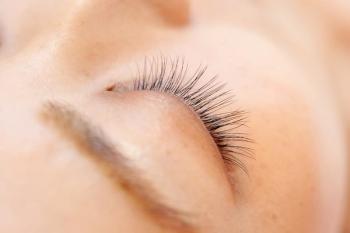
- Vol. 10 No. 9
- Volume 10
- Issue 9
Why osmolarity should be the top test for tear film evaluation
The ability to get the most out of our patients is limited by the best that our patients can achieve. The tear film influences vision, the tear film influences the refraction, and refraction changes influence measurements for everything we do. Therefore, it only stands to reason ODs need to constantly work on the tear film. I am again making my pitch to my OD colleagues to measure the osmolarity of this critical yet small layer that affects all that we do in optometry.
Why osmolarity is important
Osmolarity is my number-one test for dry eye. I view it as the “standard of care” because it is representative of the properties of a patient’s tears and offers a strong predictive tool for the diagnosis of this refractive nemesis.
Notice I avoided calling it “dry eye.” When ODs are diagnosing changes to the tear quality, we may see alterations that precede the traditional symptoms patients and doctors associate with dry eye. This is a tear abnormality and needs a more proactive diagnostic approach.
Other tests
The Schirmer’s test, for example, is limited from the perspective that all it does is give us a volume of tears coming out of the eye with no information about the quality or property of those tears. Few doctors perform the test because it is not very predictive, as well the amount of time it takes in the chair-notwithstanding the vitriol that patients have for this paper in the eye.
For a patient with aqueous deficiency or an underlying systemic disease such as Sjögren’s syndrome, the Schirmer’s test could be beneficial to demonstrate the basal tear rate. However, we know that dry eye disease is multifactorial, so tear volume limits our ability to understand what is going on. Osmolarity is more definitive of the homeostatic nature of the tear and disease state.
Tear break-up time (TBUT) is somewhat informative, but it is not precise and lacks a strong predictive value. If I know that my patient’s tears are breaking up, I do not know the severity or underlying cause of the problem. Frankly, I can look at the meibomian glands and note the apparent lack of uniformity that is most likely occurring. In addition, although low TBUT implies a problem, patients with poor tear quality can have a high TBUT. #tbut2long
Measuring for inflammatory mediators is a nice compliment to osmolarity. The inflammatory nature of dry eye disease means that there is an increase in osmolarity-then inflammation is also likely. Conversely, because inflammation is not exclusive to dry eye, a positive test may not indicate dry eye. Tear osmolarity offers a higher level of diagnostic accuracy and thus a device that would give both at the same time would be a great complement to our diagnostic tests.
When screening all patients for tear-related disease, I think it is a mistake to begin with redness and discomfort. One of the best metrics for early dry eye disease is fluctuating vision, which is one of the first signs of a decrease or change in tear quality. I ask patients if their eyes get watery-can they see better if they blink? With the increased use of monitors, phones, and streaming videos, we see more and more symptoms at younger ages. #screenresponsibly
Testing osmolarity
Rather than relating vision problems to dryness or irritation, I check the tear osmolarity (TearLab Osmolarity System, TearLab). If the osmolarity is below 308 mOsm/L or there is an inter-eye difference above 8 mOsm/L, then I know that the patient may have dry eye disease, even in the absence of symptoms.
This is a call-to-action to do something now before the patient becomes symptomatic and uncomfortable-especially if the patient is a contact lens wearer. The patient may have allergies, lid structure problems, or other pathologies. When osmolarity is normal, I look for other causes of discomfort or vision changes.
Testing tear osmolarity does not require special skill or long-term training. Anyone in my practice can use the device. We hover along the lid margin for a few seconds, where the device absorbs tears, and it gives us a value in less than 10 seconds. We have the results in the pretesting room before we move on to the next test. There could be reflex tearing if the tester accidentally rubbed the device on the eye, but that is easy to avoid.
If patients are advised not to use any eye drops for two hours prior to testing and there has been no dilation, anesthesia, or staining, clinicians can conduct osmolarity testing at any time. If a patient requires an artificial tear to obtain accurate topography or auto refraction, it is a good idea to pause briefly and check tear osmolarity first because there may be a problem.
With such a fast, simple test at my fingertips, dry eye diagnostic testing is commonplace. Managing the tear film should be a regular practice within the optometric armamentarium. And with early treatment of dry eye, patients are more successful in controlling the disease and better prepared for surgery, contact lenses, and Fortnite. #hidebehindthetrees
Articles in this issue
about 7 years ago
Vision care back in Kentucky Medicaid mixabout 7 years ago
3 strategies to grow your practiceabout 7 years ago
5 tips to impress contact lens patientsabout 7 years ago
View patients as missed opportunity, not lost causeabout 7 years ago
OCT helps diagnose retinoschisis in glaucoma patientsabout 7 years ago
Dry eye protocol for any practiceabout 7 years ago
When to send your hypertensive patient to the ERabout 7 years ago
Highlights of ARVO 2018’s anterior segment postersabout 7 years ago
Know the four stages of dry eye blepharitis syndromeNewsletter
Want more insights like this? Subscribe to Optometry Times and get clinical pearls and practice tips delivered straight to your inbox.













































